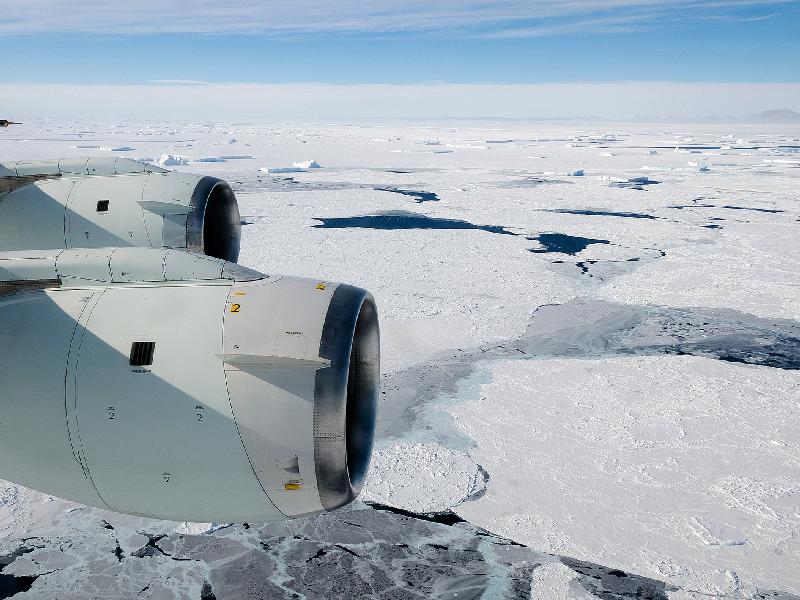|
Spreading outAntarctic sea ice nears record extent once againPosted August 22, 2013
Antarctic sea ice extent in mid-August reached a record or near-record level high at 18.7 million square kilometers, according to the National Snow and Ice Data Center The positive growth of total sea ice extent around Antarctica, which averages 18 million square kilometers at the height of winter, is part of a long-term trend and is consistent with how scientists believe climate change affects the southernmost continent. [See previous article — Record extent: 2010 climate report notes Antarctic sea ice grows while world warms.] 
Photo Credit: NSIDC
A graph shows the extent of Antarctic sea ice extent in recent years against the 40-year average.
Unusually extensive ice was reported in the Bellingshausen, Amundsen, and Ross seas, and in the western Indian Ocean sector. Climate conditions since June have been variable, but the most recent surge in ice growth has occurred during a period of unusually high pressure over the center of the continent, resulting in a slowing of the circumpolar winds, warm winter conditions for the central ice sheet areas and cold conditions in the Bellingshausen, allowing ice to grow extensively there. In contrast to the Antarctic, sea ice in the Arctic has undergone dramatic losses in recent years. Sea ice is an important feature of the Earth’s climate system because it reflects solar energy back into space. Its decline in the Arctic is problematic, in part, because less reflective cover means more solar energy is absorbed by the dark ocean, which raises temperatures. In turn, that melts more sea ice, allowing more solar energy to reach the surface in a positive feedback loop. |



For USAP Participants |
For The Public |
For Researchers and EducatorsContact UsNational Science FoundationOffice of Polar Programs Geosciences Directorate 2415 Eisenhower Avenue, Suite W7100 Alexandria, VA 22314 Sign up for the NSF Office of Polar Programs newsletter and events. Feedback Form |


